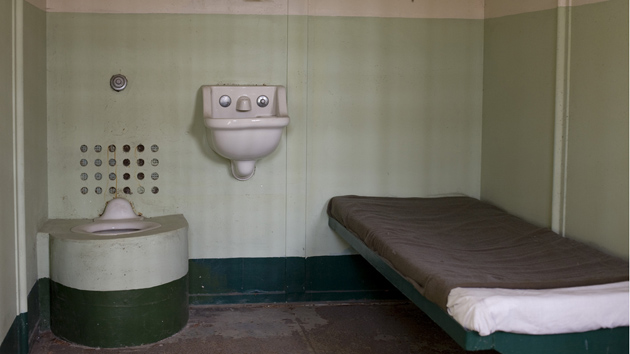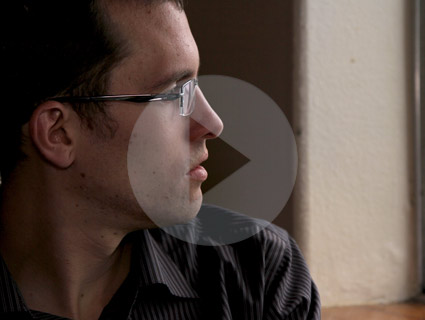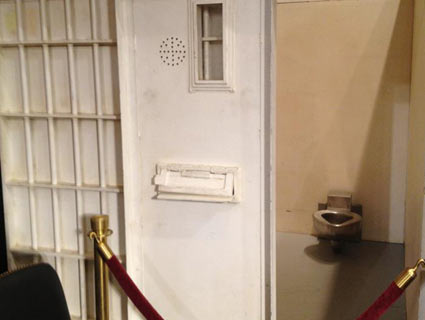
<a href="http://www.shutterstock.com/pic.mhtml?id=8370679&src=id">Daniel DeSlover</a>/Shutterstock
Minors, pregnant women, and the developmentally disabled can no longer be placed in solitary confinement in New York State prisons (barring exceptional circumstances) thanks to an agreement between the New York Civil Liberties Union (NYCLU) and the New York State Department of Community Corrections (DOCCS) on February 19. The agreement will require the state to develop sentencing guidelines and maximum isolation sentences for the first time, and will make it the largest US prison system to ban the use of disciplinary solitary confinement for minors.
The agreement came just days before Sen. Dick Durbin (D-Ill.) called for the end of the use of solitary for certain vulnerable individuals at a high-profile congressional hearing on Tuesday. The hearing featured testimony from activists, corrections officials, and former inmates, including Orange is the New Black author Piper Kerman, who stated: “Solitary confinement impedes access to important pre-natal and women’s health care services. In fact, pregnant women in solitary confinement often receive no medical care. And yet, pregnant prisoners in America are still sent to the SHU [Special Housing Unit].”
New York is not the only state taking steps toward solitary confinement reform. Last week, Colorado Department of Corrections executive director Rick Raemisch, who has committed to lowering Colorado’s solitary confinement rate to less than 3 percent of the state’s prison population, penned a New York Times Op-Ed about his own experience in willing isolation for a night. At an early February meeting of corrections professionals, Mike Dempsey, who runs the Indiana Department of Corrections’ Division of Youth Services, discussed his state’s reduction of juveniles in solitary confinement from 48 beds—with some minors serving 24-month sentences—to 5-10 with a maximum sentence of 24 hours. Earlier this month, California, home to last year’s massive prisoner hunger strike, held a hearing on the use of solitary confinement—though ultimately prison advocates were unsatisfied with the Department of Corrections and Rehabilitation’s proposed regulations.
These measures seem to echo a growing uneasiness with the use of solitary, especially for nonviolent inmates. The New York State agreement emerged from a class-action lawsuit, Peoples v. Fischer, brought by the NYCLU to challenge “the constitutionality of New York State’s practice of arbitrarily sentencing tens of thousands of incarcerated individuals to months and years of extreme isolation and solitary confinement for alleged infractions that often present no threat to prison safety.” Advocates hope the introduction of sentencing guidelines will help divert nonviolent individuals from solitary confinement, and shorten the stay of those who do end up in isolation.
According to a 2012 NYCLU report, “DOCCS provides no mandatory standards and little detailed guidance on when corrections officials should punish convictions with extreme isolation.” Operating without clear guidelines, the New York state prison system currently houses 3,800 prisoners in isolation as punishment for breaking prison rules. From 2007 to 2011, DOCCS handed out more than 68,000 isolation sentences for “tier 3” (most serious) offenses–only 16 percent of which were for violent behavior involving assault or weapons. Many inmates earned their way to isolation through nonviolent infractions such as failure to obey an order, lying, or loss or destruction of state property.
According to the same report, the average solitary sentence in New York state prisons from 2007 to 2011 was five months. Juan Méndez, Special Rapporteur on Torture for the United Nations, has called for prohibition of all isolation sentences longer than 15 days. Méndez believes solitary confinement amounts to torture and inhumane treatment when used “indefinitely or for a prolonged period, for persons with mental disabilities, or juveniles.”
While in isolation, inmates eat, sleep, and spend 23 hours a day in confined, windowless boxes similar to this cell in California’s Pelican Bay State Prison. Studies on involuntary confinement consistently find negative psychiatric symptoms within the first 10 days of isolation. Psychiatrist Stuart Grassian says that isolated inmates often experience confusion, hallucination, overwhelming anxiety, primitive aggressive fantasies, persecutory ideation, and sudden violent outbursts.
The New York agreement sets specific guidelines for the reforms:
- 16 and 17 year old inmates housed at the most restrictive level will receive out-of-cell programming and outdoor exercise at least five days a week, with no more than 19 hours in a cell per day. As an alternative to isolation, the state will develop a general population unit specifically for minors sentenced to disciplinary housing.
- Pregnant women will not be placed in solitary confinement for disciplinary purposes.
- DOCCS will implement an incentive-based program that provides an alternative to isolation for inmates with significantly limited intellectual capacity.
- Two new positions will be added to oversee and monitor the state’s disciplinary system.
- Sentencing guidelines and maximum isolation sentences will be implemented for all confinement sanctions.
In recent years, human rights advocates have increasingly questioned the isolation of inmates like principal plaintiff Leroy Peoples, who served 780 consecutive days in solitary for the non-violent violation of filing false legal documents. “This agreement is an important step toward dignity and decency,” Peoples said in a statement. “I thank the governor for taking this seriously and hearing us out.”












